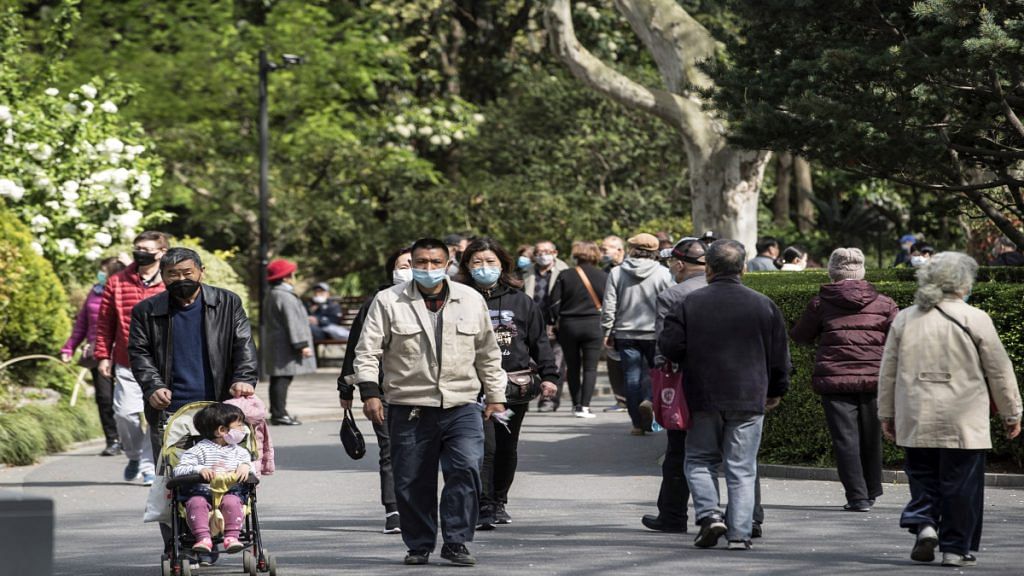New Delhi: As debate rages over the nature of the spread of Covid-19, a study by Chinese researchers conducted early this year has shown that a majority of the infections are transmitted indoors.
Currently awaiting peer review, the study was conducted by six researchers of the Southeast University in China’s Nanjing, the University of Hong Kong and the University of Beijing. Using data from 320 cities in China between 4 January and 11 February, they found a higher number of infections occurred in closed spaces, though more people were likely have been infected in a single instance outdoors. It also stated that “sharing indoor space is a major SARS-CoV-2 infection risk”.
The study, released on 7 April, could raise questions over lockdown policies implemented in several countries, particularly the closing down of open public places like parks and markets.
According to the World Health Organization (WHO), the novel coronavirus is spread through droplets of various sizes, which occur “when a person is in close contact (within 1m) with someone who has respiratory symptoms”. Studies have so far shown that transmission may occur through fomites i.e. objects or materials that can carry infection.
Also read: The four stages of Covid-19 transmission & why India maintains it is not yet in stage 3
The study
The researchers collected information on 7,324 confirmed coronavirus cases from the local municipal health commission website of the 320 cities, excluding the Hubei province where the infection first started.
Although data from Hong Kong, Macau and Taiwan was included in the study, it didn’t include data from the major cities of Beijing, Shanghai, and Guangzhou “due to insufficient case descriptions”. The information the researchers gathered included the “age, sex, venue of infection, symptoms, date of symptom onset, hospitalisation, and confirmation and history of exposure”.
From this data, the researchers identified what they called “outbreaks”, i.e. clusters of three or more cases. These outbreaks were further divided into six categories: home, transport that included train, private car and bus, food venues, entertainment venues including gyms and barbershops, shopping venues and other miscellaneous venues including hotel rooms and hospitals.
Also read: China tests thousands to calculate true spread of Covid-19 amid accusations of under-reporting
The results
The researchers were able to identify 318 outbreaks — “129 involved only family members, 133 involved family relatives, 29 involved socially connected individuals, 24 involved socially non-connected, and only three involved multiple relationships”.
In 83 cases, the outbreaks could be traced back to multiple possible venues. Hence, 254 of the 318 outbreaks had occurred in a home (79.9 per cent), 108 in transport, 14 at a food venue, seven at an entertainment venue, and seven at a shopping venue, with an additional 26 at a miscellaneous venue.
“Most of the 254 home outbreaks included three to five cases … The proportion of large outbreaks was high for shops and food venues,” the study stated.
Also read: Lockdown slowing virus spread, Covid-19 cases doubling in 6.2 days instead of 3, says govt
